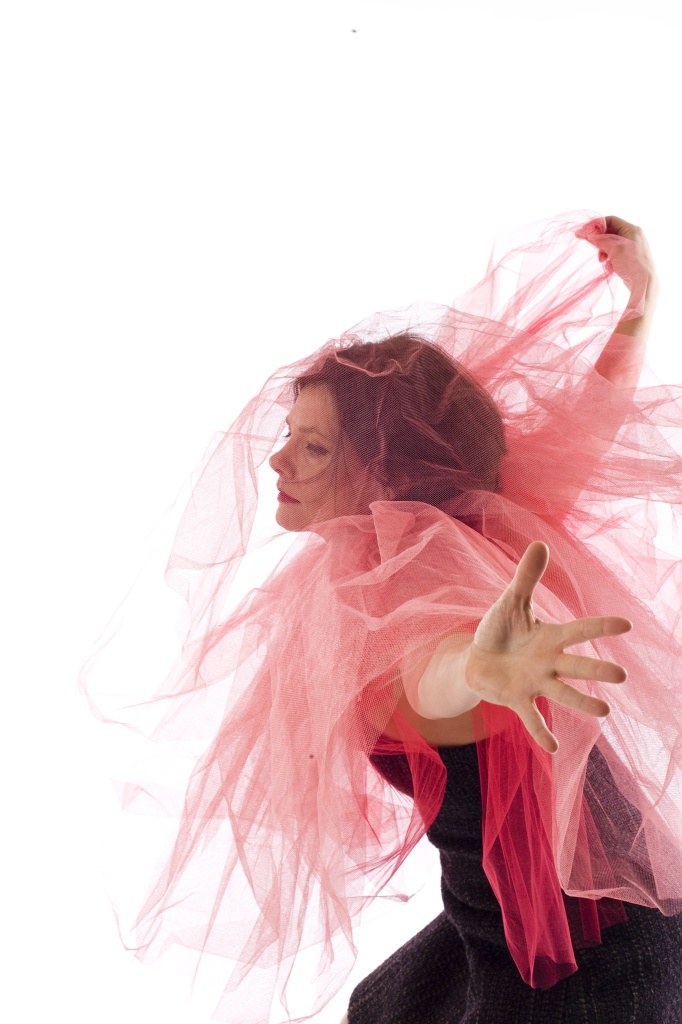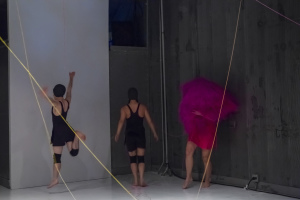
Assistant Editor Rachel Hellwig interviews Michelle Kranicke from Zephyr – a Chicago-area experimental dance company that has been around for over 20 years…
What inspired you to start Zephyr?
I was very young when I started Zephyr so the reasons behind why I founded the company don’t really resonate with Zephyr’s current aesthetic and mission. What is more important to me right now is what inspires me to continue. And that is my continued fascination with creating work, dance specifically, and trying to push beyond known ideas and preconceptions about what the art form can be.
What’s it like to be artistic director, choreographer, and performer all at once?
I have been all three for so long I guess I am not sure what it is like to not be artistic director, choreographer and performer all at once. I think the roles of director, choreographer, and performer are linked, each having their own specific requirements and priorities. For example, in my role as director I try to make sure that both Zephyr’s productions and its education work are an extension of the company’s mission. To that end I try to make sure company class is structured so that dancers are not only learning technique, but also developing an innate understanding of Zephyr’s aesthetic so that when I am working as a choreographer the performers I am working with have all the tools they need. Regarding Zephyr’s long history of arts integrated education programming, working with schools and students using movement and the creative process to access knowledge and understanding, Zephyr trains its teaching artists in the same clear detailed manner with which its aesthetic is presented. As far as my performer self, that is often the most straightforward role, and one where I am deeply connected.
What’s your choreographic process like?
My choreographic process has shifted over the past few years. I spend a lot more time alone in the studio working out ideas. As the work becomes more conceptual I need to have a strong grasp on motivation and the time to ask questions. I have moved completely away from any sort of narrative as inspiration or jumping off point in favor of a more philosophical approach to creating or not creating movement. I work with stillness and repetition, I explore habits, and I investigate abstract personas in an effort to move closer to the edge of dance, and/or to uncover something interesting in the gaps. I might spend several months or more working with an object or a material or a movement idea. Often what is interesting and complex reveals itself slowly over a long period of time. It takes a lot of patience and a lot of listening. When I say listening I mean taking the time to allow an idea to unfold without trying to push or force a solution or an end. I try not to let impatience crowd out what is developing.
When I am working with dancers though my approach is different. We often start from a very expansive place. I have moved away from improvisation as means to discover movement to a practice that involves giving the dancers tasks, and then looking at what evolves from those tasks. Aside from the directions for the task, I don’t give specific instructions on how dancers can approach the task. Then I set out to really scrub the movement clean, to watch it over and over in order to pull out any extraneous gesture or flourish so that what is left is only what is absolutely necessary. That’s why the technique of the dancer is so important. They have to be able to execute movement clearly, cleanly and precisely, without artifice, as if the movement was naked. They also need to be very intelligent so that they understand that the act of paring down does not take away their personal mark on a work, but rather enhances that mark.

What qualities do you look for in dancers and collaborators?
Although some of the work may seem deceptively simple, its construction, the articulation of the movement or stillness, and the personas within each piece require a very intelligent and technically trained dancer. They need to know how to access clear shapes and forms, how to apply metaphor to movement that has been choreographed and not lose the clarity of that movement, and to be able to move easily from raw energy, to precision, to stillness.
Regarding collaborators, as cliche as it sounds, I look for artists I can trust. I tend to be very loyal, and I think the best relationships between collaborators can only be built over time. I have worked with the same lighting designer for 17 years, the same video artist for 4 years, the same dramaturg and architect for 4 years, and the same costume designer for 5 years. The spatial sensibility of each collaborator’s medium adds so much depth to the works as they develop.
Who/what are your artistic inspirations?
Like most dancemakers I find inspiration from other choreographers, but I also find a lot of inspiration in film, especially Japanese films. There is a different sense of timing and pacing that I find very compelling. I also find inspiration in visual art. Whether its abstract or realistic, I always look at the negative space in paintings and how the artist uses light. For me, finding new ways to think about and present movement often entails looking at other art forms, thinking about the abstract qualities in those forms and finding parallels or contrasts with movement.
Tell us about Zephyr’s most recent project The Balance In Between
The Balance in Between is a prelude to SITE/less, a new 3-year, 3-phase project. I had intended on presenting the first phase of SITE/less, but as the performance dates approached it became clear that I needed more time in studio with some of my larger ideas. So I decided to revisit some materials and ideas I had been working with a few months prior that were left unfinished while incorporating some foundational concepts for SITE/less. The Balance in Between touches on ideas of limitation, entanglement, and endurance. The piece was performed at Defibrillator Gallery. There was no formal seating so the audience was left to their own devices. The Balance in Between challenged the performers using long stretches of stillness, movement repeated to the point of exhaustion, and material that compromised both the sight and mobility of my character. I really wanted the audience to see the work unfold over time and just when they were in a place of comfort to be nudged out of that place into a new experience.
What are your artistic goals for the future?
I am back in the studio working on SITE/less, both alone and with dancers. I will be taking the next year to really grapple with those ideas. We are only in the very first stages so it’s hard to say how it will develop. But, no matter what, it will definitely be a journey.




